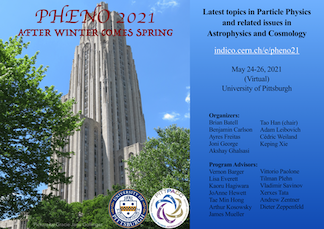Speaker
Description
Scattering amplitudes are often split up into their gauge (su(N)) and kinematic (two copies of complexified su(2)) components. Since the su(N) gauge part is often calculated using flows of colour, it should similarly be possible to describe the su(2) \oplus su(2) kinematics of an amplitude in terms of flows of chirality. In two recent papers (hep-ph:2003.05877 & hep-ph:2011.10075) we showed that this is indeed the case, introducing the chirality-flow formalism for Standard Model calculations. In the chirality-flow method (which simplifies the spinor-helicity method) Feynman diagrams can be directly written down in terms of Lorentz-invariant spinor inner products, allowing the simplest and most direct possible path from Feynman diagram to complex number. In this talk, I will introduce this method and show some examples.
